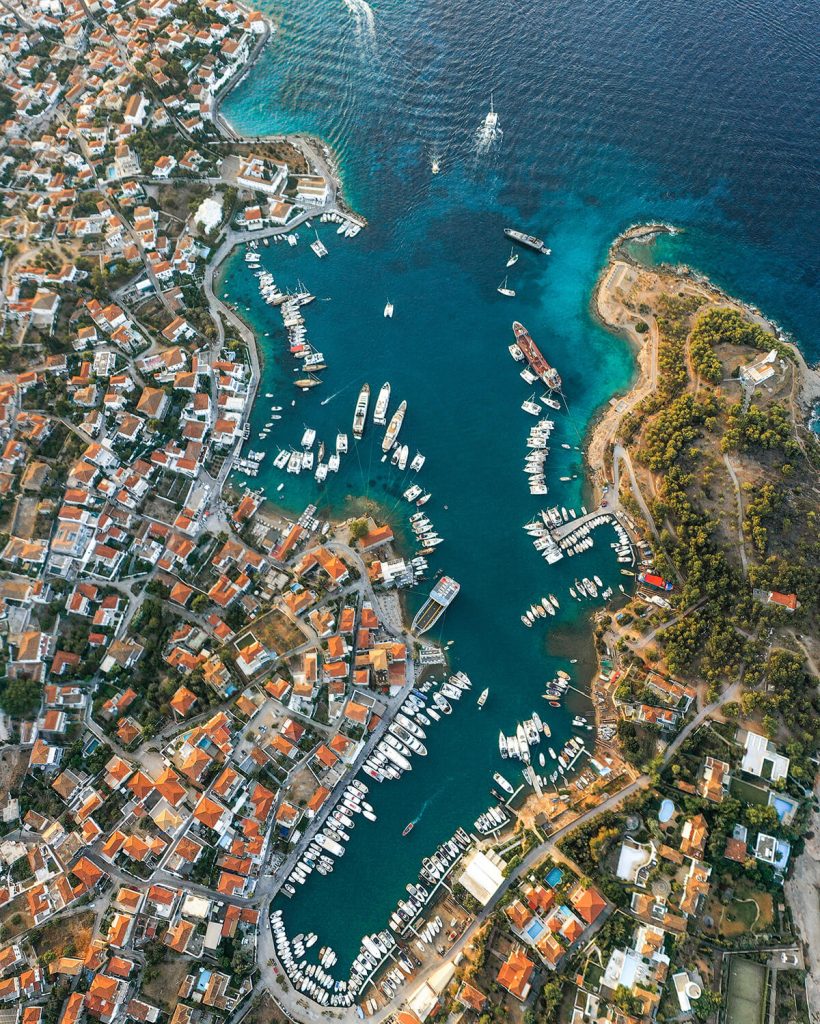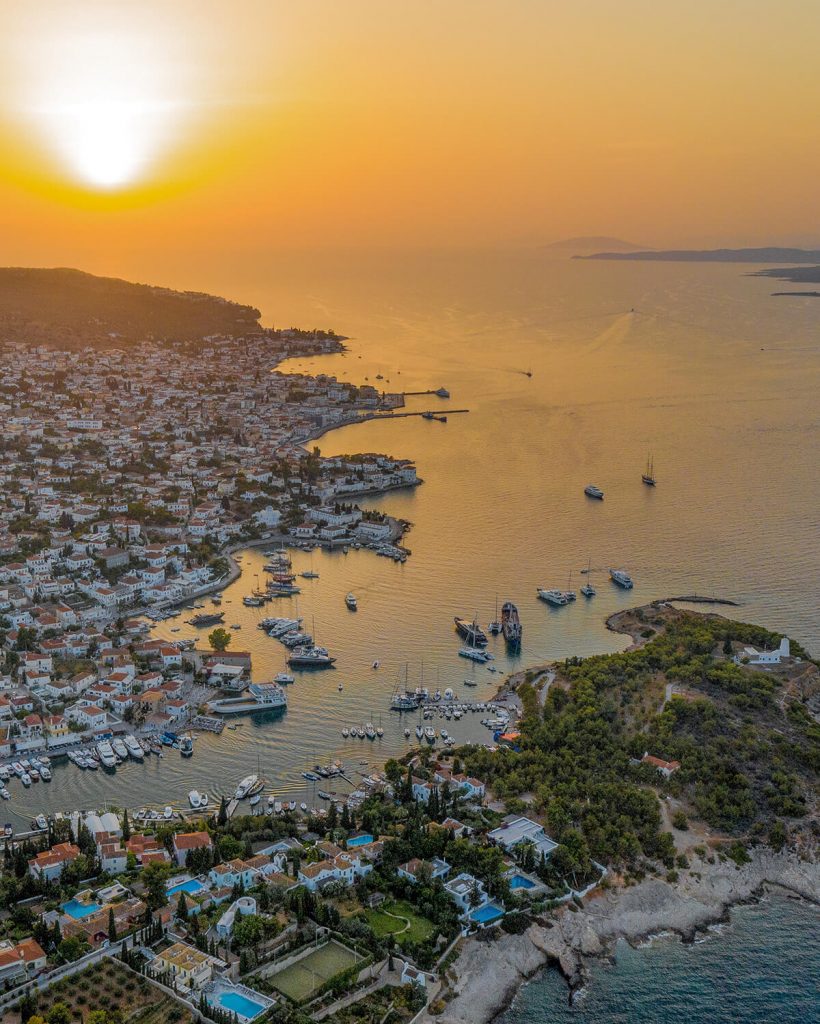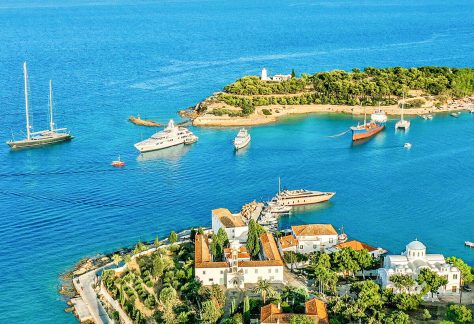Known as Isola di Spezie under Venetian rule and Pityoussa (pine-clad) in ancient times, Spetses, is a picturesque, car-free island with unique architecture, naval history and culture.
Spetses Island can be found on maps since the Mycenaean Era under the name “Pitiousa”, which translates to “pine-filled” and was a commercial and trading post. However, archaeological findings from the Early Helladic Period have been discovered on the island, dating back to 2300 BC.
The island was under Venetian occupation from 1200 to 1460 AD and they named the island “Isola di Spezie”, the island of Spices (and Aromas) due to the somewhat spicy scent of the pine trees and local herbs such as oregano and thyme.
During the 17th century, and already under Ottoman rule since the 16th century, Spetses was mainly inhabited by northern tribes (Arvanites) and populations form the western Peloponnese (Tsakones). The central settlement of the island was called “Kastelli”, as in castle, an enclosed and protected area far away from the seafront due to attacks and raids by pirates. None of the protective walls remain due to a fire and later development of the area.
Prior to the Greek War of Independence in 1821, another well-known revolt (the “Orlofika”) in 1769 took place and Spetses joined the revolt. As it was unsuccessful, in retaliation, Spetses was burnt and destroyed, while most of the participants had to flee the island. Some years later, after they were pardoned and due to a Russian-Ottoman trade deal (Kioutskouk Kainartzi), Greek vessels were able to sail under the Russian flag. This led to a naval, commercial and economic development for the islanders, Spetsiots included.
The 18th century is considered the Golden Age of Spetses, which developed a powerful commercial presence in the Mediterranean.


This economic prosperity is visible until today through the island’s architecture and its prestigious manors built by wealthy seafaring families. While the Spetsiots were acquiring their fortunes, they were also preparing to revolt against the Ottomans in 1821.
Spetses was the first island to revolt against the Ottomans on the 3rd of April, 1821, with the island of Hydra and Psarra following suit and joining forces with the revolution on the Peloponnese. Spetsiotan naval forces are praised throughout Greek history for their courage and immediate response, while the Spetsiotans are equally famous and celebrated for their heroic actions and sacrifices during the fight for the cause of independence. Amongst them, Laskarina Bouboulina, a female captain who not only funded, but also sailed her ships into battle.
Due to the strategic geographic position of Spetses, an important naval battle occurred in September 1822 when the Ottoman forces attempted to reclaim Nafplio, a city northwest to Spetses and an important administrative centre during and after the Revolution. The Spetsiotan naval forces, joined by vessels from Hydra and Psarra, in a heroic battle of blasting cannon fire all night long, were not only able to intercept the Ottoman forces, but to also make them flee. The Battle of Spetses, most famously known today as the “Armata”, is celebrated every year with a re-enactment at the beginning of September.
After Greece became an independent state in 1830, Spetses started to decline economically mostly due to the invention of the steamboat and moving the capital from Nafplio to Athens.
A large number of locals had to emigrate and the island’s population decreased, until the early 20th century when a Spetsiotan immigrant returned from the USA and decided to invest his fortune into the island’s development. This man was Sotirios Anrgyros, founder of the Anargirios and Korgiallenios School, a boarding school modelled off Eaton College with male students from prestigious and wealthy families. The visiting families stayed at the Poseidonion Hotel, also built during Anargyros’ time, which became the grandest hotel in the Balkans.
Visitors included politicians, royals and Athens’ social elite carrying Spetses into a new cosmopolitan era. With these foundations, tourism developed highly in Spetses for the next century and until this day, is one of the most popular travel destinations.
